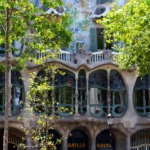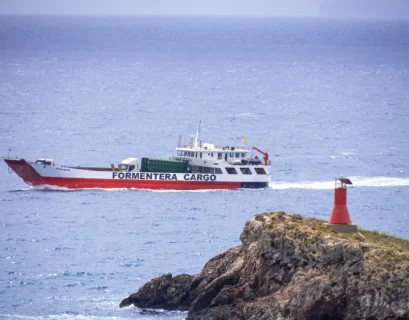Curious about Paradores in Spain? These state-run, character-filled hotels let you sleep inside castles, palaces, monasteries, and modern landmark buildings often with sweeping views and serious regional cuisine. With 96 properties nationwide and a heritage stretching back over 85 years, Paradores offer a uniquely Spanish way to travel, blending hospitality with history.
This guide explains how Paradores work, which ones to book, what they cost, and smart tips for planning a memorable stay whether you’re road-tripping through Andalusia or hopping between dramatic northern coasts and mountains. For practical planning, jump to Booking and practical tips.
What is a Parador?
A Parador is a hotel operated by Spain’s state-run network, created to preserve notable buildings and promote local economies. Many occupy restored monuments think fortress walls, cloisters, and Renaissance courtyards while others are contemporary structures in spectacular settings. The experience is part museum, part boutique stay, and fully Spanish in its sense of place.
Fast facts about Paradores: The Paradores network has been welcoming guests for over 85 years and today includes 96 hotels across mainland Spain and the islands, from beachside modern builds to UNESCO-adjacent old towns.

Why book a Parador?
- Historic character: Rooms and public spaces showcase original stonework, courtyards, and antiques.
- Unbeatable settings: Clifftops, national parks, hill towns, and old quarters put the landscape and culture on your doorstep.
- Regional gastronomy: On-site restaurants spotlight local recipes, seasonal produce, and denominación de origen wines.
- Consistent standards: State-run management emphasizes service, preservation, and sense of place.
- Good for road trips: Many offer parking and are ideal bases for day trips to villages and natural sites.
Types of Paradores (and what they feel like)
- Castles & fortresses: Atmospheric, often perched above river gorges or plains. Expect thick walls, views, and historic suites.
- Monasteries & convents: Calm cloisters, lofty refectories, and contemplative gardens; great for couples and culture buffs.
- Palaces & noble houses: Elegant salons, tapestries, and period details near cathedrals or main squares.
- Contemporary & coastal builds: Airy rooms with terraces, sea views, and easy access to beaches and trails.

Paradores vs other stays: what to expect
| Feature | Parador | Typical hotel | Vacation rental |
|---|---|---|---|
| Historic architecture | Common (restored monuments) | Occasional (boutique exceptions) | Rare |
| Scenic, heritage locations | Core strength | Variable | Variable |
| On-site regional dining | Standard, often a highlight | Varies by property | Self-catering |
| Room uniqueness | High (every room can differ) | Moderate to low | High but inconsistent |
| Loyalty program | Yes (Amigos de Paradores) | Often (major chains) | No |
| Parking convenience | Frequently available | Varies, less in old towns | Varies widely |
How much do Paradores cost?
Rates vary by property, season, and room type. As a general guide, expect approximately €100–€250 per night in shoulder seasons, with iconic city or landmark locations trending higher in peak periods. Look for special offers, half-board packages (dinner + breakfast), and member rates via the loyalty program.
Tip: Prices are dynamic. Book early for high-demand properties (e.g., Granada by the Alhambra or Santiago de Compostela on pilgrimage season dates).
Great Paradores to consider (by trip style)
- Iconic heritage: Santiago de Compostela (grand historic hostal on the main square); León – San Marcos (monumental façade and museum feel).
- Andalusia views: Ronda (gorge-side panoramas); Granada (steps from the Alhambra’s gardens); Carmona (Moorish-meets-Renaissance palace).
- Clifftop/coastal: Aiguablava (Costa Brava coves and pine-clad cliffs); La Gomera (lush Canary Island scenery and ocean vistas).
- Mountain & nature: Cangas de Onís (gateway to Picos de Europa); Bielsa or Gredos (hiking and dark skies).
- Medieval ambience: Cardona (fortress with Romanesque charm); Cuenca (near the hanging houses and canyon walks).

Booking and practical tips
- Reserve early for famed sites and festival weekends; many book out months ahead.
- Ask for the view: Heritage buildings are unique request a terrace, balcony, or “vista” room if available.
- Consider half-board: It simplifies planning and showcases regional dishes; breakfast spreads are robust.
- Check access details: Historic centers can have restricted traffic; confirm parking and driving directions.
- Mind seasonality: Some rural or coastal Paradores adjust services off-season; verify spa/pool opening times.
- Join the loyalty program: Free to enroll and can unlock member offers and welcome perks.
Pro move: Build a route chaining two or three Paradores within the same region short scenic drives, different architectural styles, and zero compromise on dinner and views.
Sample 5–7 day routes with Paradores
Andalusia classic (5–7 days)
- Ronda: Gorge views and white villages nearby (Grazalema, Zahara).
- Granada: Early Alhambra entry, Albaicín strolls, Sierra Nevada day trip.
- Carmona: Palatial stay close to Seville without big-city parking stress.
Northern green Spain (6–8 days)
- Santiago de Compostela: Cathedral square atmosphere and Galician seafood.
- Cangas de Onís: Lakes of Covadonga, Picos de Europa hikes, cider houses.
- Ribadeo or coastal stop: Cantabrian cliffs and beach walks.
Castile & León heritage loop (5–7 days)
- León – San Marcos: Museum-quality monument and tapas in the Barrio Húmedo.
- Ávila or Salamanca: Medieval walls or golden-plaza evenings.
- Segovia: Alcázar silhouettes, roast suckling pig, and aqueduct views.
What to know before you go
- Room individuality: Layouts vary; elevators may be present but not all rooms are identical in access flag needs when booking.
- Quiet charm: Historic wings can be serene; lighter sleepers might prefer rooms away from courtyards or event spaces.
- Local rhythm: Dinner service usually starts later than in some countries; plan snacks if arriving late.
Frequently asked questions
Are Paradores family-friendly?
Yes. Many offer spacious rooms and outdoor areas; check for extra beds or connecting rooms when reserving.
Do Paradores have modern amenities?
Expect Wi‑Fi, climate control, and modern bathrooms. In older buildings, certain architectural quirks remain by design.
Can I stay without a car?
Urban Paradores are walkable from sights. Rural properties are best with a car or pre-arranged transfers.
FAQs
How much does staying at a Parador typically cost per night?
Most travelers pay about €100–€250 per night in shoulder seasons, with peak dates and landmark locations running higher. Suites and signature rooms can exceed €300. To save, book early, join the loyalty program for member rates, and compare B&B vs half-board bundles.
Which Paradores are best for scenic coastal views and beach access?
For Mediterranean coves and cliffside panoramas, Aiguablava on the Costa Brava is a standout. On the Atlantic/Cantabrian side, Ribadeo offers estuary and coastal views, while La Gomera in the Canaries pairs ocean vistas with lush island scenery. Look for terrace rooms for the best outlooks.
Are Paradores suitable for road trips and do they offer parking?
Yes many Paradores include on-site or adjacent parking, making them ideal road-trip bases. In historic centers, traffic may be restricted; request entry instructions and parking details ahead of arrival. Some properties also offer EV charging ask when booking.
How do I book half-board packages and save money at Paradores?
Select the “half-board” (media pensión) rate when comparing room options; it typically includes dinner and breakfast. Check seasonal promos and member offers, and compare the package price with booking meals à la carte. Half-board is most economical if you expect to dine on-site.
What accessibility and modern amenities can I expect in historic Paradores?
Most have Wi‑Fi, climate control, and modern bathrooms; many also provide elevators, adapted rooms, and step-free routes where feasible. Because these are heritage buildings, layouts vary confirm accessible room types, ramped access, and lift proximity before reserving.
Bottom line
Paradores turn your hotel into part of the trip: authentic architecture, regional food, and locations that make sightseeing effortless. With 96 properties across Spain, you can plan an entire itinerary around them book early for the icons, consider half-board, and string together a few in one region for an unforgettable, uniquely Spanish journey.













